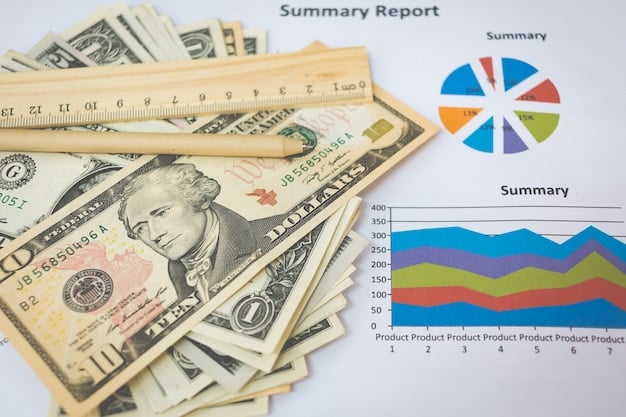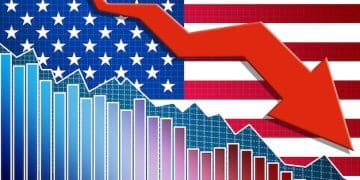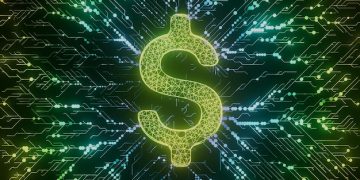Fiscal Policy in the US: Shaping Economic Outcomes

How fiscal policy decisions shape economic outcomes in the US by influencing aggregate demand, resource allocation, and long-term growth through government spending, taxation, and debt management.
How fiscal policy decisions shape economic outcomes in the US is a critical question for understanding the nation’s economic landscape. Fiscal policy, encompassing government spending and taxation, plays a pivotal role in shaping economic stability and growth. Let’s delve into the intricacies of this relationship and explore how these decisions impact various sectors of the economy.
Understanding Fiscal Policy: An Overview
Fiscal policy is the use of government spending and taxation to influence the economy. It’s a powerful tool that can be used to stimulate growth during recessions or to cool down an overheating economy. Understanding how fiscal policy decisions shape economic outcomes in the US requires examining its components and how they interact.
In essence, fiscal policy is about the government’s budget – how it chooses to spend money and how it raises revenue. These decisions have far-reaching effects on employment, inflation, and overall economic health.
Key Components of Fiscal Policy
Fiscal policy can be broadly divided into two main categories: discretionary and automatic stabilizers.
- Discretionary Fiscal Policy: Involves deliberate changes in government spending or taxation to influence the economy. Examples include stimulus packages during economic downturns or tax cuts to boost consumer spending.
- Automatic Stabilizers: These are built-in features of the economy that automatically adjust to smooth out economic fluctuations. Examples include unemployment benefits, which increase during recessions, and progressive taxation, which takes a larger percentage of income as income rises.
These components work together to either stimulate or restrain economic activity, aiming for stable growth and full employment.
In conclusion, comprehending the basics of fiscal policy—its definition, objectives, and key components—is fundamental to understanding its broader implications for the US economy.

The Impact of Government Spending
Government spending is a crucial element of fiscal policy. It directly influences aggregate demand and can stimulate economic activity. This includes investments in infrastructure, education, defense, and various social programs.
Understanding the effects of government spending is crucial for assessing how fiscal policy decisions shape economic outcomes in the US. Let’s explore these impacts in more detail.
Types of Government Spending
Government spending can be categorized into various types, each with distinct economic effects.
- Infrastructure Spending: Investments in roads, bridges, and public transportation can create jobs and improve productivity.
- Education Spending: Funding for schools and universities can enhance human capital and drive long-term economic growth.
- Defense Spending: Military expenditures can stimulate economic activity through contracts with private companies and job creation.
- Social Programs: Spending on programs like Social Security and Medicare provides income support to vulnerable populations and stabilizes consumer spending during economic downturns.
These spending categories represent different approaches to influencing economic outcomes, each with unique strengths and trade-offs.
In conclusion, the types and allocation of government spending significantly influence its overall impact on economic activity, job creation, and long-term growth.
Taxation and Its Economic Effects
Taxation is the other key lever of fiscal policy. It affects disposable income, investment incentives, and overall economic activity. Changes in tax rates and policies can have significant consequences for businesses and individuals.
Analyzing the economic effects of taxation is essential for understanding how fiscal policy decisions shape economic outcomes in the US. Let’s delve into the details.
Types of Taxes and Their Impact
Different types of taxes have different economic effects.
- Income Tax: Influences disposable income and consumer spending. Lowering income tax can stimulate spending, while raising it can reduce it.
- Corporate Tax: Affects business investment and hiring decisions. Lower corporate taxes can incentivize investment, while higher taxes can discourage it.
- Sales Tax: Impacts consumer spending on goods and services. Lower sales taxes can increase consumer demand, while higher taxes can reduce it.
- Property Tax: Primarily affects local government funding and property values.
These taxes collectively shape the economic behavior of individuals and businesses, impacting overall economic performance.
In conclusion, understanding the nuances of taxation and its various forms is vital for grasping its overall impact on the US economy.
Fiscal Policy and Economic Stability
Fiscal policy plays a crucial role in maintaining economic stability. By using countercyclical measures, the government can mitigate the effects of recessions and prevent the economy from overheating during expansions.
Examining how fiscal policy interacts with economic stability is essential for understanding how fiscal policy decisions shape economic outcomes in the US. Let’s explore this relationship.
Countercyclical Fiscal Policy
Countercyclical fiscal policy involves adjusting government spending and taxation in response to economic fluctuations.
Investing in unemployment benefits during recessions can help provide a safety net for those who lose their jobs, while increasing taxes during boom times helps reduce inflationary pressures.
Spending on infrastructure and education increases and enhances human capital and long-term growth rates.
Military spending is often cited as a means of creating jobs and expanding economic activity by way of government contracts with private companies.
These measures aim to smooth out the business cycle and promote stable economic growth.
Ultimately, countercyclical fiscal policy represents a key strategy for managing economic stability and fostering sustainable growth.
The National Debt and Fiscal Sustainability
The national debt is the accumulation of past government deficits. Managing the debt is crucial for ensuring long-term fiscal sustainability. High levels of debt can lead to higher interest rates and reduced economic growth.

Assessing the impact of the national debt on fiscal sustainability is vital for understanding how fiscal policy decisions shape economic outcomes in the US. Let’s explore this in more detail.
Strategies for Debt Management
There are several strategies for managing the national debt.
raising taxes will increase revenue, but may hinder economic growth.
Cutting government spending can reduce the deficit, but may create political difficulties.
Restructuring the debt by lowering interest rates can also help reduce the overall burden.
These strategies represent different approaches to ensuring long-term fiscal stability.
In conclusion, careful management of the national debt is essential for sustaining long-term fiscal health and economic stability.
Case Studies: Fiscal Policy in Action
Examining historical case studies can provide valuable insights into the effectiveness of fiscal policy. The US has implemented various fiscal policies in response to economic crises and challenges.
Analyzing these case studies is critical for understanding how fiscal policy decisions shape economic outcomes in the US. Let’s look at some notable examples.
Examples of Fiscal Policy Implementation
The United States has relied on fiscal policy measures to stimulate growth, encourage demand, and reduce demand.
- The American Recovery and Reinvestment Act of 2009: Enacted in response to the Great Recession, this stimulus package included tax cuts and increased government spending to boost economic activity.
- The Tax Cuts and Jobs Act of 2017: This legislation reduced corporate and individual income taxes, aiming to stimulate investment and job creation.
- The Coronavirus Aid, Relief, and Economic Security (CARES) Act of 2020: Passed in response to the COVID-19 pandemic, this act provided financial assistance to individuals, businesses, and state and local governments.
These examples highlight the diverse ways in which fiscal policy has been used to address economic challenges in the US.
In conclusion, historical case studies demonstrate the practical application and impact of fiscal policy on the US economy, providing valuable lessons for future policymaking.
| Key Point | Brief Description |
|---|---|
| 💰 Government Spending | Investments in infrastructure, education, and defense can stimulate economic activity and growth. |
| Taxation 💸 | Tax policies impact disposable income and investment incentives, influencing overall economic performance. |
| 📉 National Debt | Managing national debt is crucial for long-term fiscal sustainability and economic stability. |
Frequently Asked Questions (FAQ)
▼
Fiscal policy refers to the use of government spending and taxation to influence a nation’s economy. It’s a method governments employ to either stimulate or cool down economic activity.
▼
Government spending stimulates the economy by increasing demand, creating jobs, and funding essential services such as infrastructure, education, and healthcare.
▼
Taxation influences disposable income and business investments, affecting economic activity. Tax rates and policies are adjusted to either encourage growth or control inflation.
▼
Managing national debt is vital for fiscal sustainability, as high debt levels can lead to higher interest rates, reduced economic growth, and financial instability, if not properly managed.
▼
Automatic stabilizers are built-in economic features that automatically adjust to stabilize fluctuations, like unemployment benefits increasing during recessions, helping maintain economic balance.
Conclusion
Understanding how fiscal policy decisions shape economic outcomes in the US is essential for informed citizenship and effective governance. By carefully managing government spending, taxation, and debt, policymakers can create a more stable and prosperous future for the nation.






